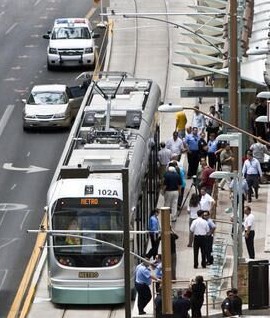
Phoenix light rail
(Photo: Cheryl Evans)

Photo Gallery

LightRail-Now Discussion Group
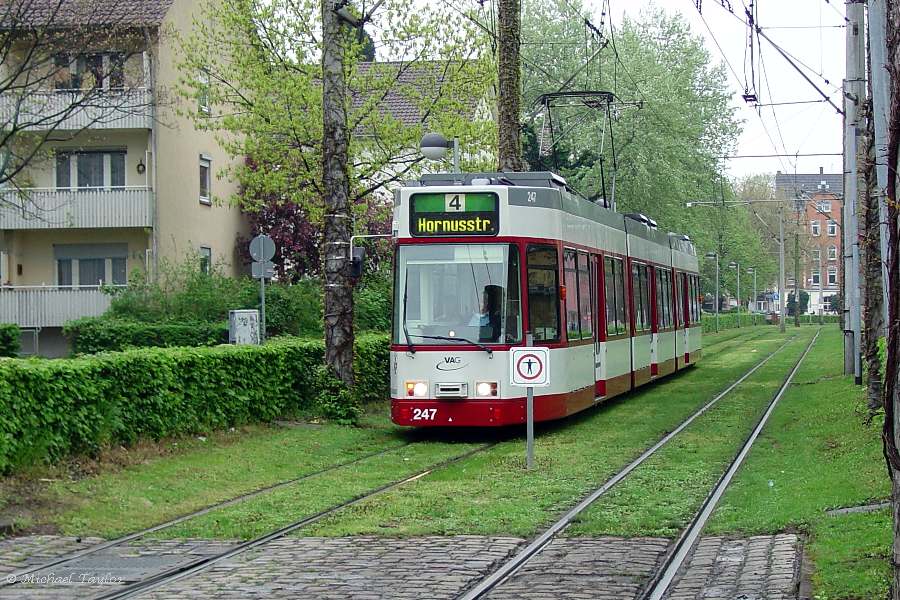
Streetcar Systems
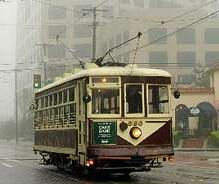
Heritage Trolleys

Rail Transit Political Campaigns
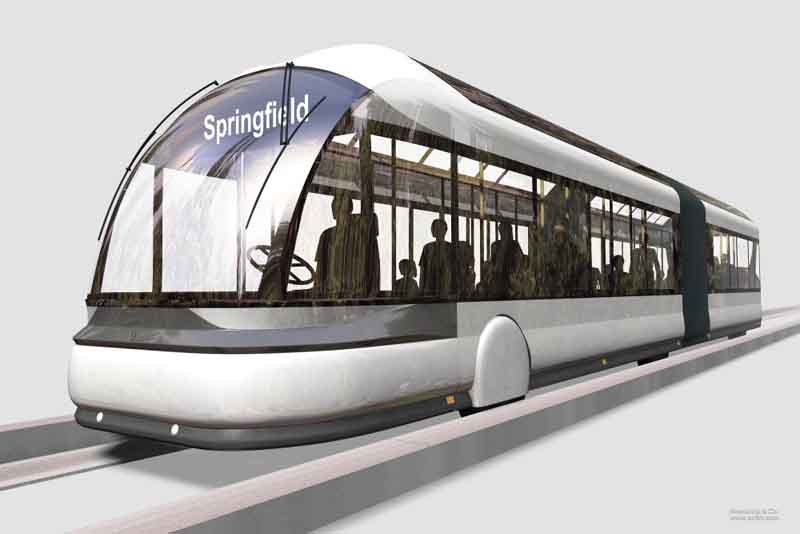
"Bus Rapid Transit" Analyses
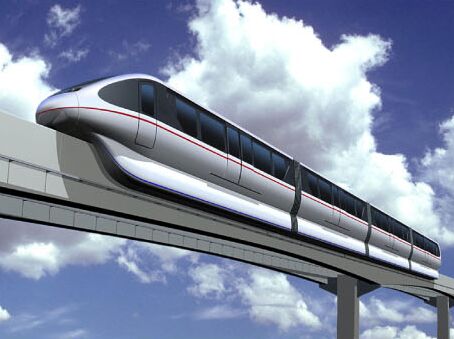
Monorail & "Gadgetbahn" Analyses
Related Links
Light Rail Now Project can be contacted at:
Light Rail Now!
lightrailnow@lightrailnow.org
 |

Produced by the Light Rail Now! Publication Team
This news feature provides an ongoing Weblog of particularly significant developments in public transportation and rail transit.
20 March 2010
Phoenix provides model of light rail success for Tampa
Could Phoenix's success with its new light rail transit (LRT) system provide a model for LRT development in the Tampa-St. Petersburg (Florida) area?
In a January 8th article, the St. Petersburg Times notes that "Hillsborough County is considering increasing the sales tax by a penny to pay for – among other transportation improvements – the beginnings of a light rail system."
>>
To skeptics, the prospects of light rail being successful in a sprawling, car-centric area like ours are dismal.
And that's what many people in Phoenix felt, too, when that city launched its 20-mile, $1.4 billion light rail system a year ago.
So, what has happened in Phoenix, a Sun Belt city with many similarities to Tampa?
<<
To answer this question, the article provides what it calls a "report card on Phoenix's Valley Metro after one year...."
 Despite initial technical problems that slowed operations, and a struggle to meet operational costs, reports the paper, the new rail service has met some of its most important goals.
In terms of ridership, says the Times, "The light rail system has been a greater success than its proponents thought it would be, but not quite the way they envisioned."
Despite initial technical problems that slowed operations, and a struggle to meet operational costs, reports the paper, the new rail service has met some of its most important goals.
In terms of ridership, says the Times, "The light rail system has been a greater success than its proponents thought it would be, but not quite the way they envisioned."
[Photo: Cheryl Evans]
>>
In its first year, Valley Metro carried more than 10 million people, an average of nearly 35,000 passengers a day - and 34 percent over the initial projection of 26,000 riders per day.
But unlike the rest of the country's public transportation systems, which are used principally by commuters, the 20 miles of light rail stretching from central Phoenix to Mesa and Tempe has turned out to be used largely by people going to restaurants, bars, ball games and cultural events in downtown Phoenix. Only 27 percent of passengers use the train for work.
Pub crawls along the light rail have become a weekend staple, and restaurants have seen new customers from outside the neighborhood popping in off the line for brunch on the weekends. In July, the rail system added late-night service on weekends.
<<
The article quotes the co-owner of Maizies Cafe and Bistro, "which sits right along the rail line", who attested that the MEtro LRT line "is bringing us new customers who didn't have time to get in the car and drive out here before,"
The Times article notes that the LRT system "got a real test of its capacity on May 13 [2009]", when "President Barack Obama delivered the commencement speech at Arizona State University hours before the Arizona Diamondbacks played in downtown Phoenix."
Citing the Arizona Republic, the article relates that "With no major problems, the trains carried more than 50,000 people on a day of triple-digit temperatures."
But the most important gains have been steady and ongoing, according to the Times article.
>>
Some innovative ideas have boosted the nighttime use of the system. In September, the city's downtown arena – US Airways Center – teamed up with Valley Metro to use tickets for the NBA's Phoenix Suns and other events as train fares, the first such arrangement in the country.
The experiment worked:
The line is carrying about 15 percent of Suns fans and added 11,000 passengers in the campaign's first month.
<<
The Metro LRT has also imbued Phoenix with a "new image", according to the paper.
"Residents say the Metro has given the city a distinctly modern feel" it reports.
Citing a New York Times interview, the Times article quotes the accolades of a Phoenix-area real estate agent:
"There has been this pent-up demand for downtown Phoenix to grow up" he said.
"And the light rail has given people an excuse to say let's go down there and check it out."
But possibly the line's most significant impact goes far beyond image, and involves real, tangible economic rejuvenation.
As the article reports,
>>
In some part thanks to the light rail system, downtown Phoenix appears to be one of the few bright spots in an otherwise economically pummeled city, which like the rest of Arizona has suffered under the crushing slide of the state's economy.
In the first quarter of 2009, downtown Phoenix saw its revenue increase 13 percent, while the rest of the city saw a fall of 16 percent, according to the city's Community and Economic Development Department.
<<
The prevalent attitude of the Phoenix-area community toward the new rail service is summed up by Matt Pool, owner of Matt's Big Breakfast, described as "a busy spot along the line".
According to this business owner, the rail system "really improves the image and perception of Phoenix's downtown, which, although experiencing a significant renaissance in recent years, still is undergoing many improvements and changes.
The light rail, largely because it is so well run and nicely appointed, is something that I think most people are really proud of and feel positive about."
Light Rail Now! NewsLog
URL: http://www.lightrailnow.org/news/n_newslog2010q1.htm#PHX_20100320
Updated 2010/03/20
More on Public Transport in Phoenix...
More on Public Transport in Tampa...
More on Rail Transit Ridership...
More on Urban Development and TOD...
3 March 2010
Thinking about light rail?
Here's a track record of economic development to ponder...
Our recent article on New Haven's interest in a light rail streetcar, New Haven: Streetcar starter line priced at "less than $30 million",
cited a feasibility study performed by the consultant organization TranSystems, whose results were summarized in a
presentation to New Haven civic and community leaders in 2009.
Among the evidence provided, documenting the economic benefits of various tyoes of light rail transit (LRT) systems – both interurban-type and streetcar-type, was a tabulation of the economic impact of LRT
on the transport corridors of several selected cities:
• Kenosha, Wisconsin — Streetcar line completed in 2000, has attracted over $120 million in development...
• Tampa, Florida — Streetcar line completed in 2001, attracted over $600 million prior to construction and then more than $2 billion in economic development by the end of 2002...
• Memphis, Tennessee — Original streetcar project completed in 1993, two additional projects completed since then; $137 million in documented development, much more unaccounted for...
• Portland — Streetcar starter line completed in 2001, has attracted more than $2.3 billion in economic development...
• Charlotte — Interurban-type LRT that began operation at the end of 2007 has already attracted $400 million in economic development...
These benefits may be of interest to other communities assessing possible advantages and impacts of LRT proposals for their own areas.
Light Rail Now! NewsLog
URL: http://www.lightrailnow.org/news/n_newslog2010q1.htm#USA_20100303
Updated 2010/03/03
More on Urban Economic Development and TOD...
More on Kenosha Public Transport Developments
More on Tampa Public Transport Developments
More on Memphis Public Transport Developments
More on Portland Public Transport Developments
More on Charlotte Public Transport Developments
25 February 2010
New Haven:
Streetcar starter line priced at "less than $30 million"
New Haven, Connecticut — Could another small remnant of the once-great Connecticut Co. surface electric railway system be slated for a comeback?
Until it was swept away in the holocaust of the Transit Devastation era, the Connecticut Co. supported a vast state network of over 785 miles of track, providing both interurban electric railway services linking Connecticut's major cities, as well as reliable, efficient urban electric rail transit for larger cities and towns such as Bridgeport, Hartford, Middletown, New Haven, New London, Norwich, Norwalk, Stamford, Waterbury, and Watertown.
Light Rail Now has previously reported on the recent interest in developing a streetcar project to serve the small city of Stamford, Connecticut.
(See Stamford: Proposed streetcar system favored in study.)
Now New Haven – the second-largest city in the state – has joined the expanding queue of American cities lining up to pursue streetcar development.
If implemented, the New Haven and Stamford streetcar starter lines would represent the resurrection of at least some tiny urban shards of the once-pervasive statewide Connecticut Company system.
As part of the Connecticut Company's network, New Haven was once served by one of the most impressive and functional streetcar systems in the USA – till it was abandoned in 1948 and subsequently scrapped.
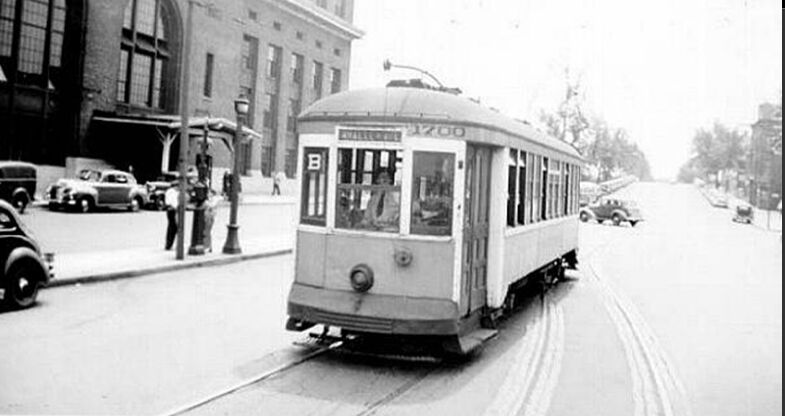 Historic photo of New Haven streetcar at Union Station.
City once boasted one of nation's most famous streetcar networks until last lines were scrapped in 1948.
Historic photo of New Haven streetcar at Union Station.
City once boasted one of nation's most famous streetcar networks until last lines were scrapped in 1948.
[Photo: TranSystems]
Interest in light rail transit (LRT) for New Haven – focusing on streetcar technology and service characteristics – has gained momentum, particularly over the past year, with Mayor John DeStefano a leading enthusiast.
In a summary published on 23 April 2009, The Transport Politic blog website carried a report on the plan taking shape from Yonah Freemark:
>>
After studying the city's downtown, transit consultants TranSystems concluded that a route connecting Union Station, where Amtrak intercity and Metro-North commuter rail trains arrive, with the downtown and medical center, would be most feasible in the short term.
Future connections to the city's less dense neighborhoods would have to wait.
The line as proposed would run in a 3.6-mile loop from Union Station, through downtown along Church Street, around Yale Central Campus, up Chapel Street, west on Dwight Street, and then south through the Yale Medical Campus.
The route would be popular for employees and students at Yale as well as downtown employees, most of whom work just blocks from the Green at the center of the city.
<<

[Map: TranSystems, with annotations by LRN]
The mobility benefits of the proposed streetcar system are underscored by TranSystems in a
presentation
to New Haven civic and community leaders, which noted that the
proposed 3.6-mile (5.8-km) line's route would...
• Connect Union Station to City Hall, County Court House, Yale Campus, Theater District, Yale Medical Center and parking...
• Connect parking garages to Yale Medical Center...
• Connect Union Station to new development, including Convention Center, Knights of Columbus, Gateway Community College and the Rt. 34 corridor.
According to this same presentation, investment costs (excluding any real estate acquisition) would total "less than $30 million" – i.e., less than $8 million per mile ($5 million per km) – and would consist of several components:
• Track and electrification — $14 million
• Rolling stock (5 new heritage-style replica streetcars) — $4.5 million
• Car barn — $2.8 million
• 15 Passenger Stops — $0.3 million
• Engineering design and contingencies — $5.5 million
Proposed service options and operating & maintenance (O&M) costs are also detailed by the consultants:
Service Level: 7 days/week
12 hr./day weekdays
16 hr./day weekends
10 minute headway
14,352 annual vehicle hours
@ $80/hr = $1,148,160
@ $100/hr = $1,435,200
@ $120/hr = $1,722,240
As to how the system's ongoing O&M costs would be paid for, the consultants suggest a number of possible options:
• BID district [Business Improvement District]
• Subsidy from City or developers for economic development
• Sales of naming rights (cars, stations)
• Payment in lieu of bus service
• Farebox receipts
A Business Improvement District (BID) in New Haven could be modeled after the one in Hartford, where property owners are responsible for paying a small incremental additional property tax assessment to fund the district's programs.
As indicated by the
Hartford BID
website, "The private dollars generated from the assessment are joined by a contribution from the City to support the BID's efforts."
While expressing some criticism over the proposal for single-track operation, Yonah Freemark of The Transport Politic enthuses that the streetcar project
>>
...would mesh perfectly with several development programs the city is preparing at the moment, mostly along the path of the Route 34 highway, which was only partially completed and which the city now wants to tear down. This highway, which the city's citizens refer to as a route to nowhere, divides the city in two and makes it difficult to walk between downtown and the medical center. Integrating the new development with a streetcar system would be ideal.
<<
Light Rail Now! NewsLog
URL: http://www.lightrailnow.org/news/n_newslog2010q1.htm#NH_20100225
Updated 2010/02/25
More on New Haven Public Transport Developments
More on Rail Transit Development...
More on Streetcars...
10 February 2010
Waco:
Business leaders promote streetcar plan
Waco, Texas — This city's proposal for a streetcar system starter line
(see Waco: Streetcar possibility attracts local interest)
is gaining momentum from a new effort to promote the project, according to a report from Rail Transit Online published on the APTA Streetcar and Heritage Trolley website (January 2010).
Chris McGowan, director of urban development for the Greater Waco Chamber of Commerce, and a core of streetcar boosters have kicked off a campaign to build public support for such a project, beginning with a $300,000 feasibility study undertaken by Waco Transit, according to the news item, which goes on to report that transit agency General Manager John Hendrickson is expecting approval by March, with financing from federal economic stimulus funds.
(One cannot help noting that such a pursuit of federal funding seems somewhat "mavericky" in contrast to the increasing trend in Texas – exemplified by Gov. Rick Perry, many rightwing legislators, and some local governments – to renounce the federal funding of Texas projects as "federal interference" in state and local decisionmaking.
Curiously, this renunciation doesn't so far seem to extend to the massive federal aid pouring in for highway construction.)
A major recent achievement of the pro-streetcar coalition is the preparation and release of a "vision for Waco's future" – in the form of a promotional study and blueprint called
Imagine Waco - A Plan for Greater Downtown.
The study was funded by a wide range of major community organizations, including the City of Waco, Great Waco Chamber of Commerce, Baylor University, Waco Foundation, 1000 Friends of Waco, Waco Business League, and Cooper Foundation.
According to a report in the Waco Tribune-Herald, McGowan contends that a downtown streetcar system could help revitalize the area that "....has been stagnant for 50 years."
The paper relates that McGowan has studied other communities over the past 18 months that have benefited from streetcar systems, such as Portland and Little Rock, "and found potential advantages for Waco."
"What's important is we get all the vacant property that's in this greater downtown area back into some sort of useful purpose so we can provide more services as a community and increase revenue for the city, and so we can thrive and keep up with our neighbors surrounding us that are growing very fast" McGowan told the Tribune-Herald.
"A streetcar can go a long way to that."
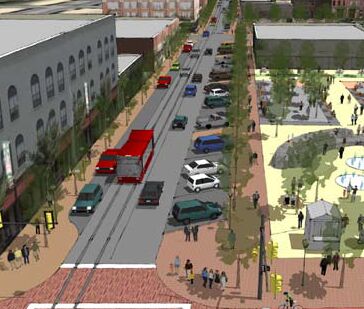 Simulation of streetcar on Elm St. approaching MLK.
Simulation of streetcar on Elm St. approaching MLK.
[Graphic: Imagine Waco]
In a recent presentation to civic and business groups, as described by the Tribune-Herald, McGowan affirmed that a streetcar system "would harmonize with the city's 40-year master plan, would provide environmentally-friendly transportation between the Baylor University campus and downtown for students and staff, and would also encourage growth."
The APTA/Rail Transit Online summary notes that an initial 3.5-mile (5.6-km) demonstration route "would connect Baylor with downtown along Fourth and Fifth streets, with a second phase crossing the Brazos River to East Waco.
In Phase 3, the line would be extended to a new high-tech research park Baylor is planning to develop."
Once the concept is proven, according to McGowan, it will be time to look for financing.
"We need to apply for start-up grants, and we need to seek funding from all of our partners – local, state and federal – to get it done" he told the Tribune-Herald.
Light Rail Now! NewsLog
URL: http://www.lightrailnow.org/news/n_newslog2010q1.htm#WCO_20100210
Updated 2010/02/10
More on Waco Public Transport Developments
More on Rail Transit Development...
More on Streetcars...
25 January 2010
As US economy stalls, public transit sputters
As we've reported in our article America's economic slump drags down public transit ridership, a recent media release from the American Public Transportation Association (APTA) [Transit News, 2009/12/21] warned that "Downturn in Public Transit Ridership Reflects Economic Times".
Included in the release is a breakdown of public transit ridership in the first nine months of 2009.
As the article relates, "Paratransit (demand response) and trolleybus were the only two modes that saw increases in ridership" – with paratransit ridership increaseing by 3.7 percent and trolleybus ridership incrementing slightly by 0.7 percent from January through September 2009.
Unfortunately, those modes are relatively minuscule in the current mix of American urban transit services.
The major fixed-route modes – motor bus and rail transit – took a relatively sharp hit from the Great Recession, although light rail transit (LRT – which APTA lumps in with diesel-powered light regional railways such as New Jersey Transit's RiverLine and the Oceanside-Escondido Sprinter) remained relatively steady, with a nearly imperceptible ridership decrease of less than one percent (-0.7%).
Light-rail-type systems in seven cities reported a ridership increase in this nine-month period.
These include electric LRT (interurban and streetcar) in Philadelphia (17.5%), Baltimore (13.9%), Memphis (11.6%), Tampa (7.0 %), and San Francisco (1.1%), plus the diesel-powered light regional railway connecting
Oceanside and Escondido, California, north of San Diego (17.3%).
In addition, Seattle's new Link LRT experienced more than 100% ridership growth in the first nine months of 2009.
Ridership on rail rapid transit ("heavy rail" – mainly subway-elevated systems) declined by 3.0 percent.
However, the Los Angeles Metro continued its trend of increased ridership with a growth rate of 6.0 percent for the first nine months.
Ridership on the Washington Metropolitan Transportation Authority (WMATA) was also virtually stable, with a very modest increase of 0.6 percent for the same time period.
Regional passenger rail ("commuter rail") ridership decreased by 5.1 percent.
However, regional rail ridership increases were recorded in several cities: Boston (2.4%), New Haven (1.4%), and Alexandria, Virginia (1.3%).
A major extension of the RailRunner regional rail system in New Mexico from Albuquerque to Santa Fe led to a particularly spectacular increase of more than 100 percent in this nine-month period.
Overall, bus ridership followed the industrywide pattern in declining by 5.0 percent in the first nine months of 2009.
But, contrary to this mode trend, bus trips increased in San Francisco by 1.1 percent.
Bus travel in cities of the smallest population area category (below 100,000) decreased by only 1.0 percent – the smallest percent decrease of all population groups.
Light Rail Now! NewsLog
URL: http://www.lightrailnow.org/news/n_newslog2010q1.htm#USA_20100125
Updated 2010/01/25
More on Rail Transit Ridership...
More on Policy & Political Issues ...
Toward a "New Deal" for Public Transport ...
22 January 2010
Augusta (Georgia):
Streetcar system would boost economic development
Augusta, Georgia — Local civic leaders' dreams of a streetcar system to spur economic development just got a lot more defined with the recent release of a feasibility study proposing 3.1-mile (5-km) downtown circulator operation, according to a November 2009 report by Rail Transit Online and published on the APTA Streetcar and Heritage Trolley website.
Study consultant URS Corporation estimated the investment cost to range between $22 million and $31 million. The suggested route would be a single track along Broad, Reynolds, and Seventh streets; an additional extension down 13th Street to the local medical center would add another $5 million.
Besides providing reliable, attractive mobility for residents and visitors in Augusta's central area, another major benefit of the streetcar project is that it is predicted to spur economic expansion.
The 36-page, $37,000 report, commissioned by the Downtown Development Authority of Augusta, did not include ridership projections; however, ridership on Augusta's bus system totals only carries about 3,000 each weekday.
Brian Piascik of URS emphasized that a streetcar system is "feasible" for Augusta, according to the Augusta Chronicle.
'There are aspects of development going on in Augusta that make a streetcar a good idea" Piascik noted.
"I want to be clear that streetcars don't cause development.
But they can speed it up, they can focus it and intensify development.
Developers see streetcars as an element of infrastructure that they can sell."
The URS study also discussed financing, although it concluded that obtaining federal funding could be difficult because of intense competition for Small Starts grants.
Possible local sources could include a sales tax increase, special financing districts, and allocation of parking revenues.
"Augusta once had a small streetcar network that was scrapped in 1937" notes the APTA/Rail Transit Online report.
Light Rail Now! NewsLog
URL: http://www.lightrailnow.org/news/n_newslog2010q1.htm#AUG_20100122
Updated 2010/01/22
More on Augusta Public Transport Developments
More on Rail Transit Development...
More on Streetcars...
More on Heritage Streetcars...
18 January 2010
Providence:
Will streetcars return to New England's "Creative Capital"?
Providence, Rhode Island — Streetcars last ran in Providence in 1948 – but could a return of a streetcar system in modern form represent a creative approach to mobility in this historic New England city that styles itself the region's "Creative Capital"?
As a December 2009 report from Rail Transit Online published on the APTA Streetcar and Heritage Trolley website recounts, a starter streetcar system with five modern cars has been proposed by a recently released Providence Metropolitan Transit Enhancement Study.
With an investment cost estimated to range between $66 million to $86 million, the streetcar starter line would run approximately 2.1 miles (3.38 km) – starting at Providence's Rhode Island Hospital, "running north through the Jewelry District and downtown to a junction near the Kennedy Plaza Intermodal Transportation Center" (according to the APTA/Rail Transit Online summary).
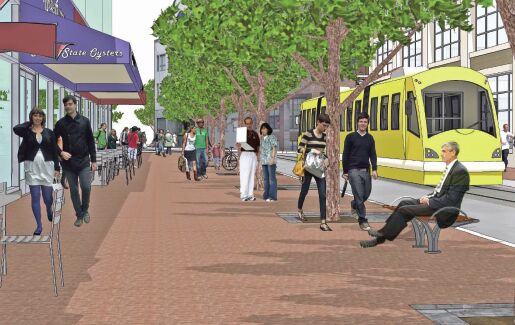 Simulation of proposed streetcar line on Richmond St. across from the currently planned Brown Medical School.
Simulation of proposed streetcar line on Richmond St. across from the currently planned Brown Medical School.
[Graphic: RIPTA]
At that junction, one branch would continue to the city's railroad passenger station, served by Amtrak and Massachusetts Bay Transportation Authority (MBTA) regional rail (commuter) trains, while another would run to Thayer Street near Brown University.
In the map below, the proposed starter line streetcar route system, with branches, is shown in solid blue, with alternative routings in the Downcity district shown in ochre.
Possible future extension as shown as blue dotten lines.
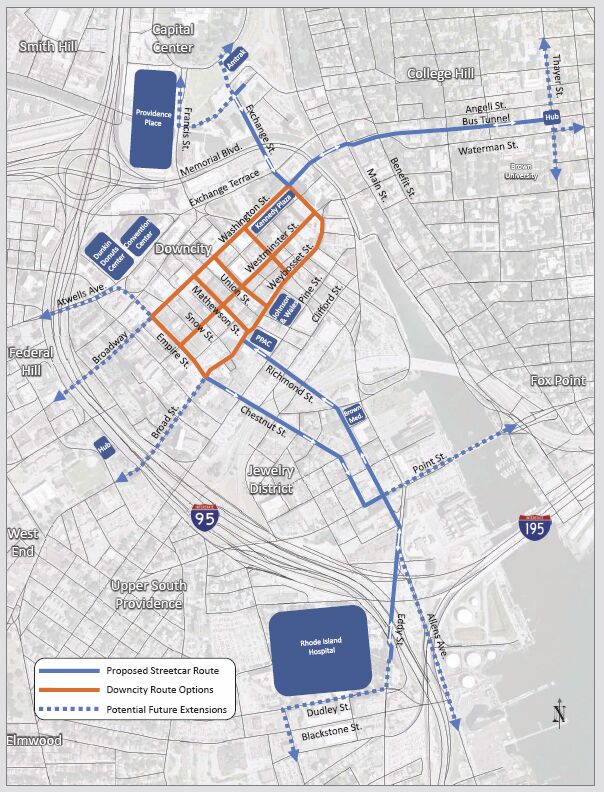
[Map: RIPTA]
The study predicts "a huge economic benefit" from redevelopment in the Jewelry District and downtown once the streetcar system is in operation.
The Rhode Island Public Transit Authority (RIPTA) anticipates completing the Alternatives Analysis and Environmental Assessment for the streetcar project (required for federal assistance) by the spring of 2011, followed by Preliminary Engineering and Final Design by the summer of 2013.
The earliest date projected for the start of revenue service is the late fall of 2015.
In the future, extensions to the streetcar system could be added along major streets southwest or south of downtown, including Atwells Avenue, Broadway, Broad Street, and Aliens Avenue.
The report also calls for a "Rapid Bus" system (alternatively referred to as "bus rapid transit", although buses would apparently run predominantly in general traffic lanes) to enhance existing service, as well as doubling the number of RIPTA's park-and-ride lots to 56 and substituting four smaller transit hubs located just outside the downtown area in lieu of the main transfer point now located at Kennedy Plaza.
The entire transit package, including the streetcar, is estimated to cost $127.6 million – but no funding has yet been identified.
However, the report emphasized that Providence is an excellent candidate for streetcars, and "officials anticipate there will be federal money for the project under the Small Starts program" according to the APTA/Rail Transit Online summary.
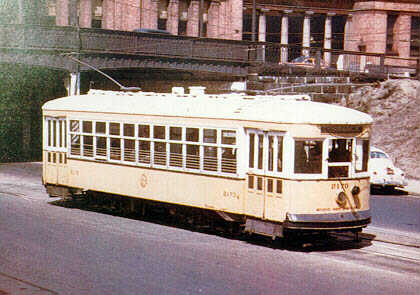 Streetcars originally provided public transport in Providence until 1948, when the last line was abandoned during America's Transit Devastation era.
Streetcars originally provided public transport in Providence until 1948, when the last line was abandoned during America's Transit Devastation era.
[Photo: Bill Volkmer collectionn]
Light Rail Now! NewsLog
URL: http://www.lightrailnow.org/news/n_newslog2010q1.htm#PRV_20100118
Updated 2010/01/18
More on Public Transport in Providence
More on Streetcars...
More on Rail Transit Development...
12 January 2010
Boise:
Civic leaders push light rail streetcar plan
Boise, Idaho — Like most American urban areas, Boise was once served by a system of electric surface railways – urban streetcar lines and interurban electric railways that connected the central city with growing communities in the surrounding region.
But by the late 1920s, all of that had disappeared – a victim of the public policy commitment to private motor vehicle development that characterized the Transit Devastation era.
Now, in the 21st century, could at least a small segment of that former electric railway service return to Boise?
The City of Boise is proposing to install an electric streetcar operation (a form of light rail transit) along a 2.6-mile (4.2-km), 15-block east-west downtown loop from St. Luke's Medical Center to 15th Street along Main and Idaho Streets (see map, below).
The projected cost is $60 million, not including the purchase of three streetcars, and the city has applied for a federal grant for $40 million under the Transportation Investment Generating Economic Recovery (TIGER) program. [Idaho Statesman, 5 Nov. 2009].
If the city receives the federal money, it will take about two years before the new system will be completed.
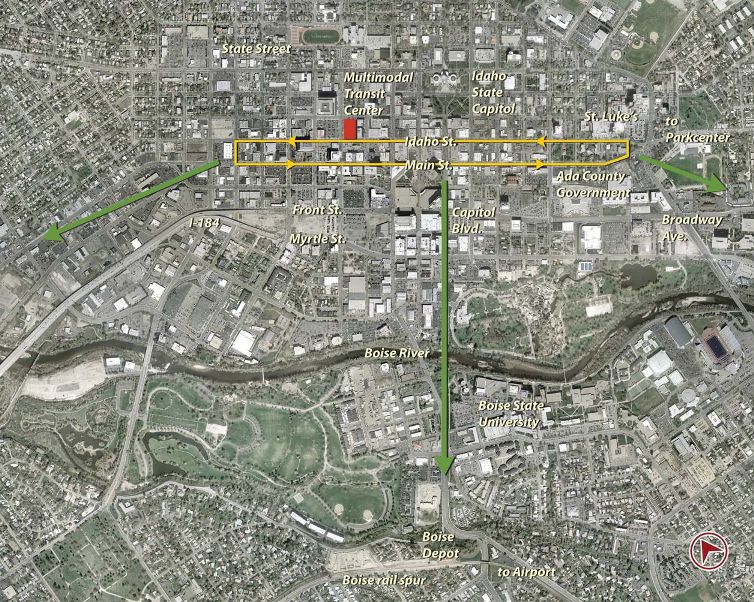
[Map: City-of-Boise]
The city plans to contribute $5 million toward the project, and the city's urban renewal agency, Capital City Development Corporation (CCDC), would contribute $5 million.
The city also proposes to establish a local improvement district (LID) that would assess a one-time fee on downtown property owners that would raise another $10 to $15 million.
Property owners could pay the assessment once or over twenty years at 5 percent interest.
The LID would extend three blocks from the track, with properties along the track paying the full fee, and properties one block away paying 2/3 of the fee, and two blocks away paying 1/3.
However, the project – particularly the plan for an LID – is encountering speed bumps on the way toward implementation.
The LID must be approved by a majority of the City Council, and some are opposed to it, claiming that property owners should have more say.
[Boise Weekly, 25 Nov. 2009]
LID revenues cannot be used for operating costs, which are projected to be $1.2 million per year.
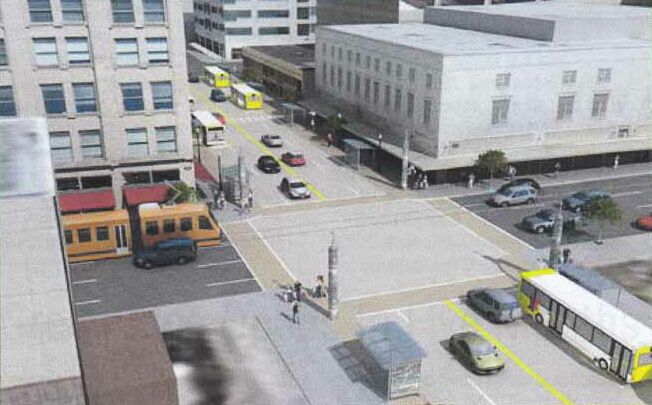 Simulation illustrates how streetcar (left side of picture) might look with other traffic in downtown Boise.
Simulation illustrates how streetcar (left side of picture) might look with other traffic in downtown Boise.
[Graphic: Capital City Development Co.]
Opposition from the right is especially fierce.
Idaho state representatives Mike Moyle, a Republican representing Star, and Raul Labrador, a Republican representing Eagle, are planning to introduce legislation that would require a vote by property owners for any city-initiated LID for $1 million or more. LIDs initiated by property owners would be exempted. Moyle and Labrador claim that the purpose of the LID is to fund very small improvements, such as curbs and sidewalks, of not more than $1 million, not a major investment like a transportation project. [Idaho Statesman, 29 Nov. 2009]
In other parts of the country, LIDs (and similar mechanisms for financing downtown improvements, such as tax increment financing or TIFs) have been used for streetcar and other transit projects.
For example, in Portland, a $19.4 million LID-like TIF district on non-owner occupied properties helped to fund their streetcar.
[Portland Office of Transportation and Portland Streetcar, Inc., Portland Streetcar Development Oriented Transit, April 2008]
The Seattle South Lake Union Streetcar project used a $25.7 million LID-like tax mechanism, which was established by local property owners who agreed to a special property tax district.
[Seattle Streetcar website, Costs and Financing]
This type of financing mechanism has been used in a number of other cities for transit and related development projects.
[Gloria Ohland, Vice President for Communications, Reconnecting America Center for Transit-Oriented Development, "Value Capture: How to Get a Return on the Investment in Transit and TOD."]
Since 2000, there have been six independent studies that included a downtown transit circulator (most recently, envisioned as a streetcar) as part of the vision for Boise's future.
Mayor David Bieter established a Streetcar Task Force in November 2008, and it will make recommendations to the city in early 2010.
The Task Force consists of 35 representatives from downtown businesses, property owners, government, and community organizations, and is chaired by Gary Michael, retired CEO of Albertsons.
The task force agreed to move forward with the 15-block east-west downtown loop, but there is some disagreement among members about whether that is the best first phase for the project.
An alternative north-south alignment would likely require a full Environmental Impact Statement (EIS) because of impacts to the Boise River, and that would significantly slow down the process.
[Task Force Meeting Minutes, 20 Nov. 2009]
The TIGER grant gives preference to projects that can be completed by February 2012, so the members are hesitant to delay the project by reconsidering the route. [Idaho Statesman, 21 Nov. 2009]
This project would be the first stage of a larger rail network that could eventually serve Boise State University, the Boise Depot and the airport to the south, and routes to the west and east of downtown.
A multi-modal transit center is planned for 11th and Idaho Streets, and the city obtained $9.6 million in federal funds for that project.
[Streetcar and Streetcar Task Force, Executive Summary, 3 Nov. 2008]
Valley Regional Transit (VRT), the regional public transit provider, and the Community Planning Association of Southwest Idaho (COMPASS) are preparing the Treasure Valley High Capacity Transit Study, which includes the streetcar project, the multi-modal transit center, expanded bus service, and transit alternatives for the I-84 corridor.
It will include recommendations for the alignment and type of service for the streetcar.
[COMPASS website]
The city plans to have thirteen stations along the route.
The task force will most likely recommend no fares for the first phase of the project.
They are looking at 10-minute headways during peak times and up to 15-minute headways at other times, with average speeds of 8 mph (about 13 km/h). Trains would run between 07:00 and 22:00 on weekdays, 08:00 and 22:00 on Saturdays, and 10:00 and 20:00 on Sundays. The system will use replica or modern streetcars with a total capacity of about 140 passengers each.
About 36,000 people work in downtown Boise, and personal motor vehicles are used for 80 percent of trips within downtown, where parking is free or low-cost and relatively available.
Projected ridership with 15-minute headways and no fare is 1,200 to 1,600 weekday passengers for 2012, the first year of service.
Ridership is projected to be reduced about 40% if the fare would be increased from free to $1.00, since many trips could be made by foot.
A study by transportation consultant URS provides a table with a comparison of ridership for various US streetcar operations.
[URS, Downtown Boise Streetcar Market Evaluation and Ridership Assessment, 15 April 2009, p. 14]
Another consultant study estimates that $124 to $207 million in new development attributable to the streetcar would be built by 2030, and that the new development could generate about $8 million annually in state and local taxes by 2030.
Preliminary analysis of the carbon footprint of the project conducted for the TIGER funding application predicts an estimated 50% lower carbon footprint resulting from the streetcar and related high density development when compared with suburban development in the Boise area.
[E.D. Hovee, Boise Streetcar Economic and Carbon Footprint Analysis, Prepared for TIGER application, 11 Sept. 2009]
Despite these projected benefits, public support for the streetcar project has been lagging.
A poll conducted by the Idaho Statesman found that less that a third of those polled thought that the streetcar would be a good way to address the economic and transportation issues in Boise, and 63% oppose spending local money for the project.
However, about half of those polled thought that the project would bring new development along the route, and about 40% believed it would be a catalyst for future transit development.
[Idaho Statesman, 22 Nov. 2009]
In response to an earlier poll, Mayor Dave Bieter pointed out that "Unfortunately, most of the respondents to this survey haven't seen the economic benefits analysis, the ridership studies, and reports from other cities that have installed streetcars."
As Mayor Bieter noted, "Those studies show that the streetcar would be an asset to the city, that it would pay for itself many times over, and that it would improve air quality, traffic congestion and parking." [Idaho Statesman, 31 Oct. 2009]
The CCDC hired an advertising agency, Drake Cooper, to provide information to the public about various projects including the streetcar.
(CCDC is funded through a combination of tax increment financing, parking system revenue and outside grants.)
[Idaho Business Review, 12 Oct. 2009]
To receive public input on the project, the city held public meetings during the end of 2009.
Political fighting over the streetcar plan has continued to rage back and forth.
A former City Council member, David Litster, staked his reelection bid in November on opposition to the streetcar project ... then but lost the election.
Undaunted, he started a petition for a ballot measure to require voter approval of a streetcar line, with language stipulating as follows:
>>
Before the Boise City Council can enact any ordinance, measure or resolution for the purpose of spending City funds to construct, in the downtown section of the City, a streetcar or trolley system, with railroad tracks in the streets and electrified cables overhead, the Council must first obtain approval for said expenditure by the vote of over 50% of the legal voters of the City. [Source: Idaho Statesman, 22 Oct. 2009]
<<
Some other city officials support a public vote on the project and are considering organizing their own referendum.
[Idaho Business Review, 4 Nov. 2009]
If the streetcar project does overcome these political obstacles and come to fruition, it would represent the return if a minuscule sliver of the once-extensive rail system, mentioned at the beginning of this article, that once served Boise and the Treasure Valley between 1891 and 1928.
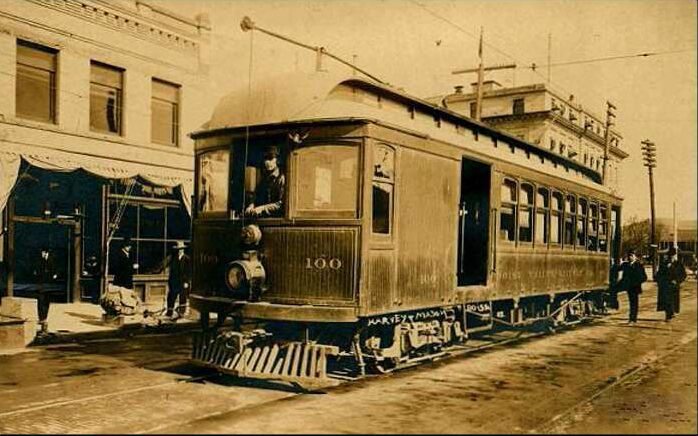 Boise Valley Railway Company interurban car provided service on network of urban and regional electric railways that once served Boise and surrounding communities.
Boise Valley Railway Company interurban car provided service on network of urban and regional electric railways that once served Boise and surrounding communities.
[Photo: Webfooters Postcard Club]
Three streetcar lines ran through all of downtown Boise, and the interurban lines ran out to Collister, Pierce Park, Eagle, Star, Middleton, to Caldwell, Nampa, Meridian – in fact, completing what was called the Boise Valley Loop of electric interurban service that interconnected the smaller towns of the region west of Boise (see map, below).
Sadly, as publicly funded and promoted roadways diverted major travel in the region to private cars, the financial difficulties of these privately owned electric railways were intensified, feeding a crisis which led eventually to the erosion and final abandonment of the electric railway system by its owners in 1928.

[Map: Webfooters Postcard Club]
Today, hopefully – particularly in an era facing Peak Oil, Global Warming, suburban sprawl, and other crises linked to excessive dependency on personal motor vehicle travel – urban areas like Boise will embrace the resurgence of electric rail
as part of a strategy to forge a more progressive mobility and urban development investment policy.
Original research and narrative for this report were prepared by Research Associate Susan Pantell; some additional material and analysis have been provided by others in the LRN Project team.
Light Rail Now! NewsLog
URL: http://www.lightrailnow.org/news/n_newslog2010q1.htm#BSE_20100112
Updated 2010/01/12
More on Public Transport in Boise
More on Streetcars...
More on Rail Transit Development...
10 January 2010
America's economic slump drags down public transit ridership
It's certainly no secret that, within the current global economic crisis, much of the public transport industry is wrestling with financial distress.
Public transportation critics (pretty much a euphemism for rail critics) are seizing the moment to attack public transit and rail transit investment by portraying each agency's budgetary crisis as somehow the result of incompetent public-sector bureaucracy and what they contend to be the supposedly inherent financial infeasibility of public transport altogether.
Typically, this is accompanied by recommendations to divert public transport subsidies into further roadbuilding subsidization.
However, there's abundant evidence underscoring the fact that virtually all public-sector agencies and services have been seriously damaged by the national (and worldwide) economic slump.
Indeed, according to several reliable reports, a new tidal wave of financial crisis among state and local public agencies is about to hit – and these agencies include state governments, city and county governments, school districts ... as well as public transit authorities.
The dimensions of this mounting crisis were recently underscored in a media release from the American Public Transportation Association (APTA) [Transit News, 2009/12/21], which headlined,
"Downturn in Public Transit Ridership Reflects Economic Times":
>>
With high unemployment, significant decreases in gasoline prices, and less state and local revenue available for public transportation operations, public transit ridership declined by 3.8 percent in the first nine months of 2009 compared to record levels in the same period last year. Trips on all of the major modes of public transportation - bus, light rail, heavy rail, and commuter rail - were down; paratransit (demand response) and trolleybus were the only two modes that saw increases in ridership.
<<
The release quotes APTA President William Millar, who noted that "This downturn in public transportation ridership is a reflection of our economic times."
"Nearly 60 percent of riders take public transportation to commute to and from work," Millar added, "so it is to be expected that public transit ridership would be lower when unemployment is high."
The public transit industry's ridership and revenue shortfall comes within the context of America's ongoing national economic crisis, APTA points out:
>>
According to the U.S. Bureau of Labor Statistics, unemployment accelerated monthly from January through September 2009, reaching 9.8 percent in September. This is 58 percent higher than the unemployment rate for September 2008.
Drops in local and state funding have seriously impacted public transit system budgets and in many cases, this has led to reduced service and/or higher fares.
<<
In June 2009, APTA released a national survey indicating that "more than 80 percent of public transit systems had seen flat or decreased funding from state, local, and regional revenues."
>>
Among transit systems facing this decreased funding, nine out of ten (89 percent) transit systems were forced to raise fares or cut service. Additionally, among those transit systems facing revenue declines, almost half of them (47 percent) reported both raising fares and cutting service to address funding shortfalls.
<<
"Just like the unemployment rate, public transit use is a lagging economic indicator" noted Millar.
"We would expect that when employment rebounds, so will transit ridership."
Light Rail Now! NewsLog
URL: http://www.lightrailnow.org/news/n_newslog2010q1.htm#USA_20100110
Updated 2010/01/10
More on Rail Transit Ridership...
More on Policy & Political Issues ...
Toward a "New Deal" for Public Transport ...
NewsLog for 2009: Oct.-Dec.
NewsLog for 2009: Jul.-Sep.
NewsLog for 2009: Apr.-Jun.
NewsLog for 2009: Jan.-Mar.
NewsLog for 2008: Oct.-Dec.
NewsLog for 2008: Jul.-Sep.
NewsLog for 2008: Apr.-Jun.
NewsLog for 2008: Jan.-Mar.
NewsLog for 2007: Oct.-Dec.
NewsLog for 2007: Jul.-Sep.
NewsLog for 2007: Apr.-Jun.
NewsLog for 2007: Jan.-Mar.
NewsLog for 2006: Oct.-Dec.
NewsLog for 2006: Jul.-Sep.
NewsLog for 2006: Apr.-Jun.
NewsLog for 2006: Jan.-Mar.
NewsLog for 2005: Oct.-Dec.
NewsLog for 2005: Jul.-Sep.
NewsLog for 2005: Apr.-Jun.
NewsLog for 2005: Jan.-Mar.
NewsLog Archives
Light Rail Now! website
|
